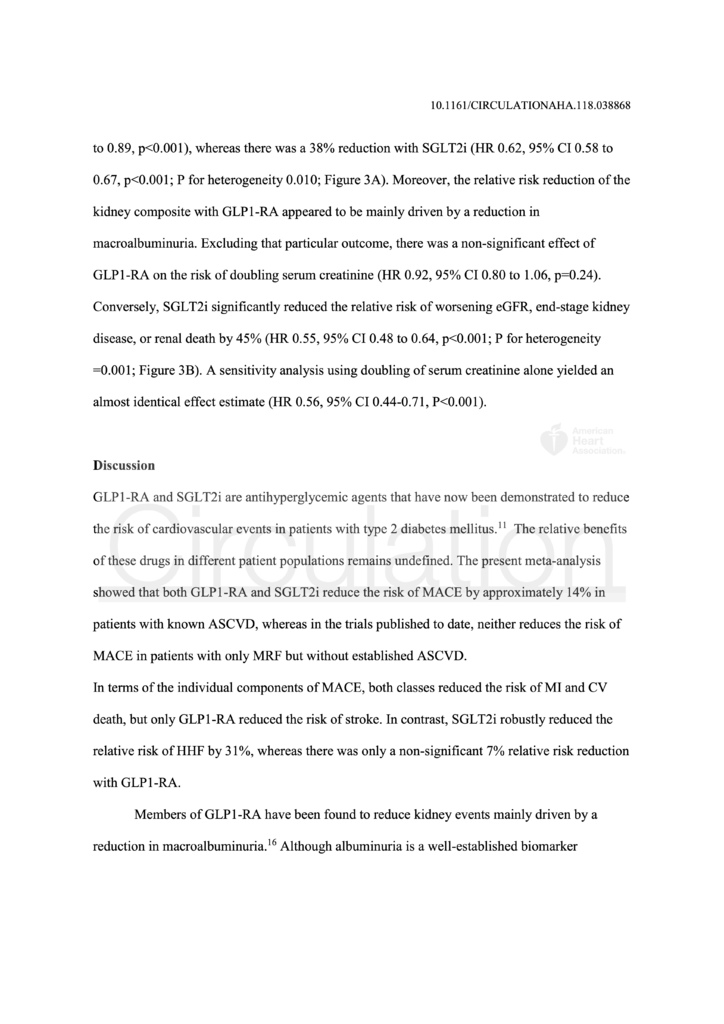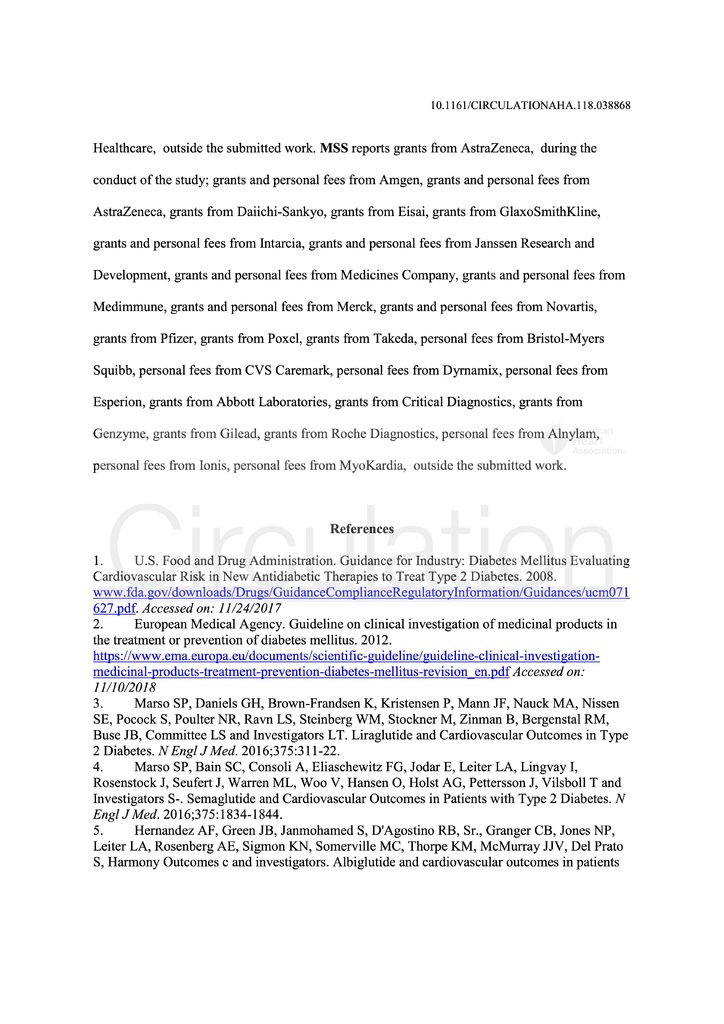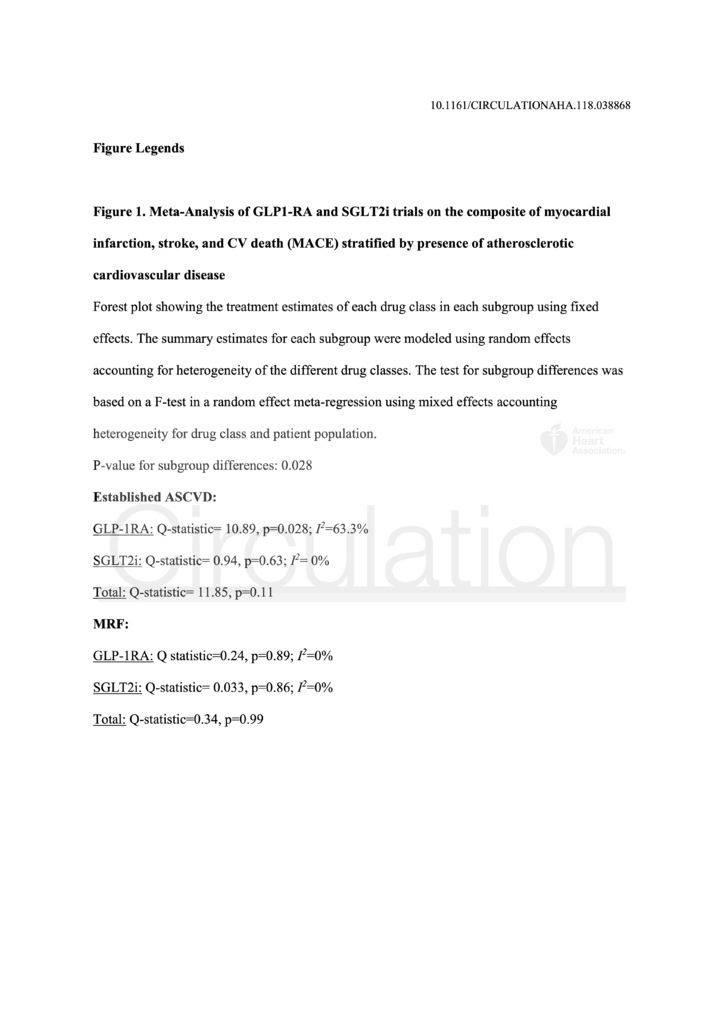這個標題實在是太長了
Comparison of the Effects of Glucagon-Like Peptide Receptor Agonists and Sodium-Glucose Co-Transporter 2 Inhibitors for Prevention of Major Adverse Cardiovascular and Renal Outcomes in Type 2 Diabetes Mellitus: A Systematic Review and Meta-Analysis of Cardiovascular Outcomes Trials
Originally published21 Feb 2019https://doi.org/10.1161/CIRCULATIONAHA.118.038868Circulation. 2019;0
29頁而已,低調看
Abstract
Background: Glucagon-like peptide 1 receptor agonists (GLP1-RA) and sodium-glucose contransporter-2 inhibitors (SGLT2i) have emerged as two new classes of antihyperglycemic agents that also reduce cardiovascular risk. The relative benefits in patients with and without established atherosclerotic cardiovascular disease (ASCVD) for different outcomes with these classes of drugs remain undefined.
Methods: We performed a systematic review and trial-level meta-analysis of GLP1-RA and SGLT2i cardiovascular outcomes trials using the PubMed and EMBASE databases. The primary outcomes were: the composite of myocardial infarction, stroke, and cardiovascular death (MACE); hospitalization for heart failure (HHF); and progression of kidney disease.
Results: In total, data from 8 trials and 77,242 patients, 42,920 (55.6%) in GLP1-RA trials and 34,322 (44.4%) in SGLT2i trials, were included. Both drug classes reduced MACE in a similar magnitude with GLP1RA reducing the risk by 12% (HR 0.88, 95%-CI 0.84 to 0.94; p<0.001) and SGLT2i by 11% (HR 0.89, 95%-CI 0.83 to 0.96; p=0.001). For both drug classes, this treatment effect was restricted to a 14% reduction in those with established ASCVD (HR 0.86, 95%-CI 0.80 to 0.93, P=0.002) whereas no effect was seen in patients without established ASCVD (HR 1.01, 95%-CI 0.87 to 1.16, P=0.81; p-interaction 0.028). SGLT2i reduced HHF by 31% (HR 0.69, 95%-CI 0.61-0.79, P<0.001) whereas GLP1-RA did not have a significant effect (HR 0.93, 95%-CI 0.83 to 1.04, p=0.20). Both GLP1-RA (HR 0.82, 95%-CI 0.75-0.89, p<0.001) and SGLT2i (HR 0.62, 95%-CI 0.58-0.67, p<0.001) reduced the risk of progression of kidney disease including macroalbuminuria, but only SGLT2i reduced the risk of worsening eGFR, end-stage kidney disease, or renal death (HR 0.55, 95%-CI 0.48-0.64, p<0.001).
Conclusions: In trials reported to date, GLP1-RA and SGLT2i reduce atherosclerotic MACE to a similar degree in patients with established ASCVD, whereas SGLT2i have a more marked effect on preventing HHF and progression of kidney disease. Their distinct clinical benefit profiles should be considered in the decision-making process when treating patients with T2DM.



































 留言列表
留言列表
 線上藥物查詢
線上藥物查詢 